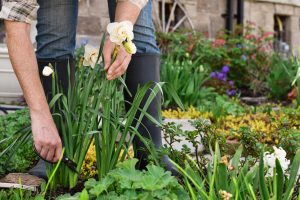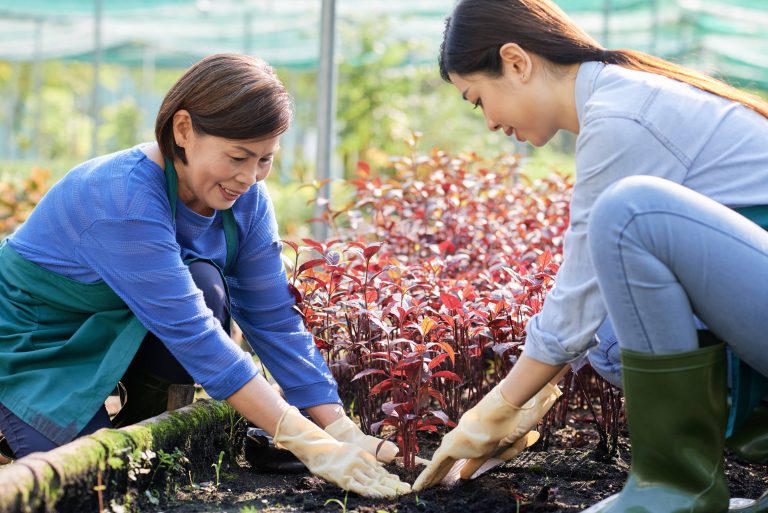
Gardening enthusiasts know that watering plants can be a time-consuming task, especially when striving for the perfect outdoor garden. One of the most efficient ways to ensure your garden thrives while conserving water is by installing a drip irrigation system. A drip irrigation system delivers water directly to the base of the plants through a network of tubing and emitters, which significantly reduces water wastage and improves plant health. In this blog post, we will explore the steps to install a drip irrigation system in your garden, making your gardening journey more enjoyable and efficient.
Step 1: Plan Your System
Before jumping into the installation, it’s essential to carefully plan your drip irrigation system. Start by mapping out your garden and identifying the areas that require irrigation. Consider the types of plants you have and their specific water needs. Divide your garden into zones if necessary, ensuring that each zone has similar watering requirements. This planning phase will help you determine the quantity and type of materials you’ll need for the installation.
Step 2: Gather the Necessary Materials
Once you have a clear plan, it’s time to gather the materials required for the installation. Here is a list of essential items you will need:
1. Tubing: The main supply lines and smaller distribution lines that transport water to the plants. Choose durable, UV-resistant tubing for long-lasting performance.
2. Emitters: These are small devices that control the flow of water to your plants. Emitters are available in various flow rates to cater to different plant water needs.
3. Connectors and Fittings: You’ll need a variety of connectors like elbow joints, tees, and end caps to navigate your tubing around the garden efficiently.
4. Pressure Regulator: This device ensures that water pressure is kept at an optimal level to avoid damage to the system.
5. Filter: A filter is essential to prevent debris from clogging the emitters and ensuring a smooth water flow.
6. Timer (optional): For added convenience, invest in a timer that automates the watering schedule.
Step 3: Lay Out the Tubing
With your materials ready, start laying out the tubing in your garden according to your plan. Begin by unrolling the main supply line along the perimeter of your garden. Secure it in place using stakes, ensuring it lies flat on the ground. Use a sharp pair of scissors or tubing cutters to cut the tubing to the desired length.
Next, attach the smaller distribution lines to the main line using connectors and fittings. Ensure that these distribution lines run along each plant or plant row that requires watering. Use stakes to hold the distribution lines in position, preventing them from moving around or becoming tangled.
Step 4: Install the Emitters
After laying out the tubing, it’s time to install the emitters. Use a hole punch to make holes in the distribution lines near the base of each plant. Insert the emitters into the holes firmly, ensuring they’re securely attached. If you’re using adjustable emitters with different flow rates, customize the flow according to each plant’s requirements. For plants with similar water needs, use equal flow emitters for uniform water distribution.
Step 5: Connect to the Water Source
Connecting your drip irrigation system to the water source is straightforward. Attach the tubing to your outdoor faucet or garden hose. It’s advisable to install a filter and pressure regulator between the faucet and tubing to maintain optimal system performance.
If you’ve invested in a timer, connect it between the outdoor faucet and tubing. The timer will allow you to automate your irrigation schedule, offering you the convenience of a worry-free watering routine.
Step 6: Test the System
Before wrapping up the installation, it’s crucial to test the system to ensure everything is operating correctly. Turn on the water supply and observe the entire system. Check each emitter to ensure water is dripping at the desired rate. Ensure there are no leaks or clogs, and make adjustments as needed. If necessary, adjust the position of the emitters or abate the flow to match your plants’ needs.
Step 7: Maintain Your Drip Irrigation System
Like any other gardening equipment, your drip irrigation system requires regular maintenance to function optimally. Periodically check the tubing and emitters for clogs, leaks, or damage, especially after the winter months. Clean the filters as needed to prevent debris accumulation. It’s crucial to repair or replace any damaged parts promptly to avoid disruptions in the water supply to your plants.
During the growing season, it’s a good idea to monitor weather patterns and adjust watering schedules to accommodate rainfalls. If you have a timer, make sure its settings align with the weather conditions.
Conclusion
Installing a drip irrigation system in your outdoor garden offers several benefits, including water conservation, healthier plants, and more free time for you. Through careful planning, proper installation, and routine maintenance, your drip irrigation system can provide efficient and reliable watering to your plants while enhancing their overall health and vitality.
Take the first step towards simplifying your gardening routine and improving your garden’s productivity by considering a drip irrigation system today. Experience the joy of gardening with the knowledge that your plants are receiving the perfect amount of water they need to flourish. Whether you are a seasoned gardener or just starting out, implementing a drip irrigation system will undoubtedly elevate your gardening experience.













